

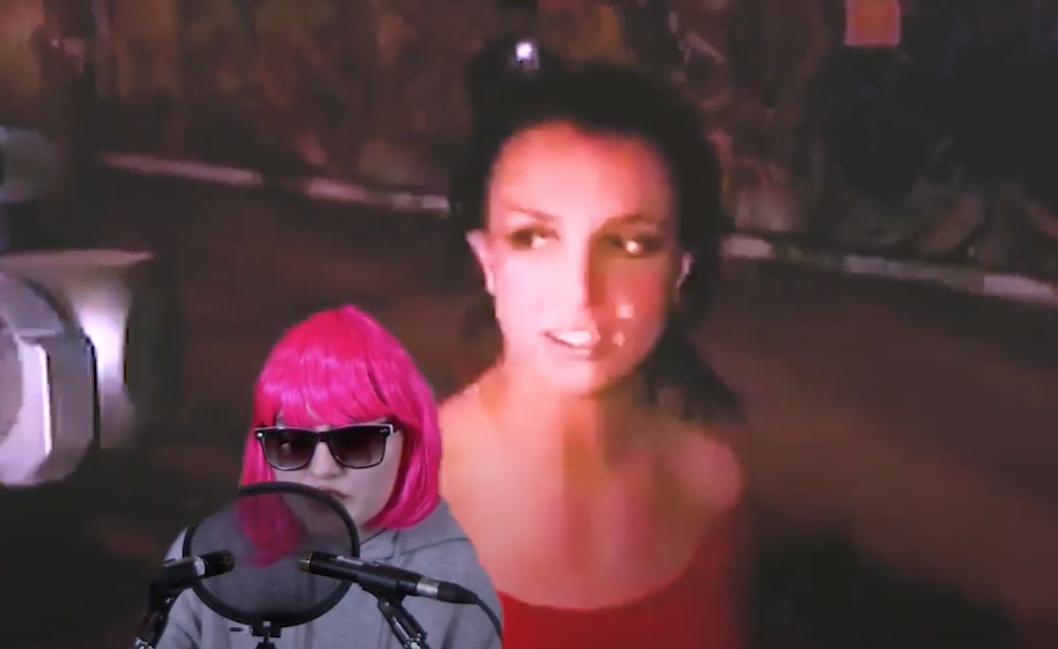
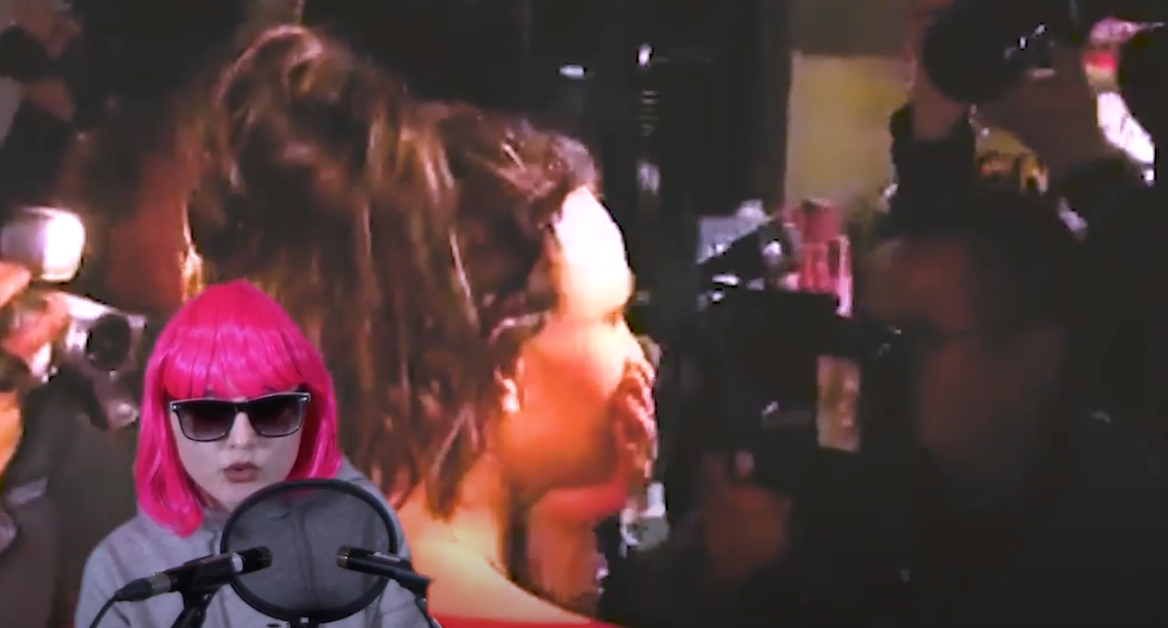


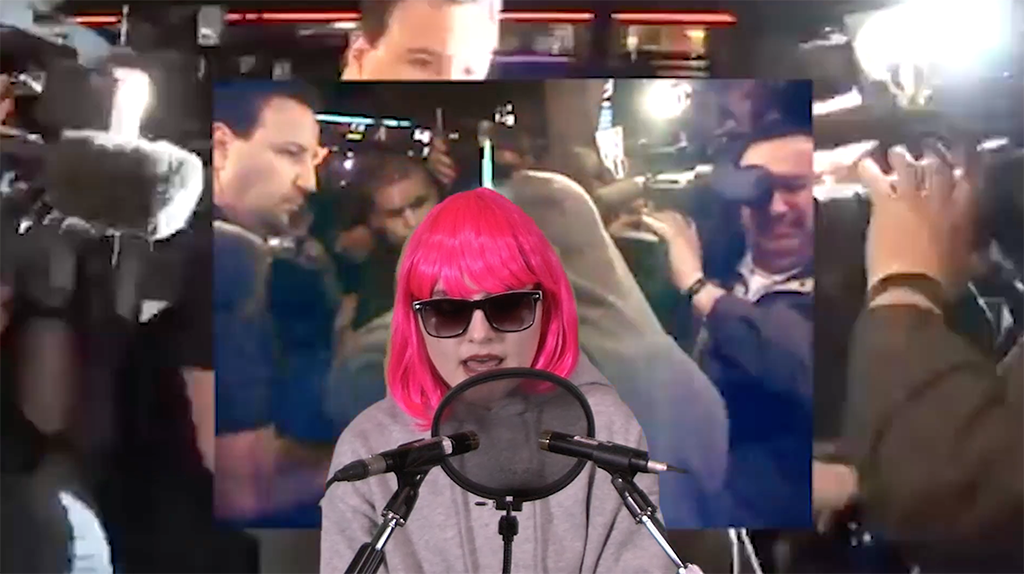
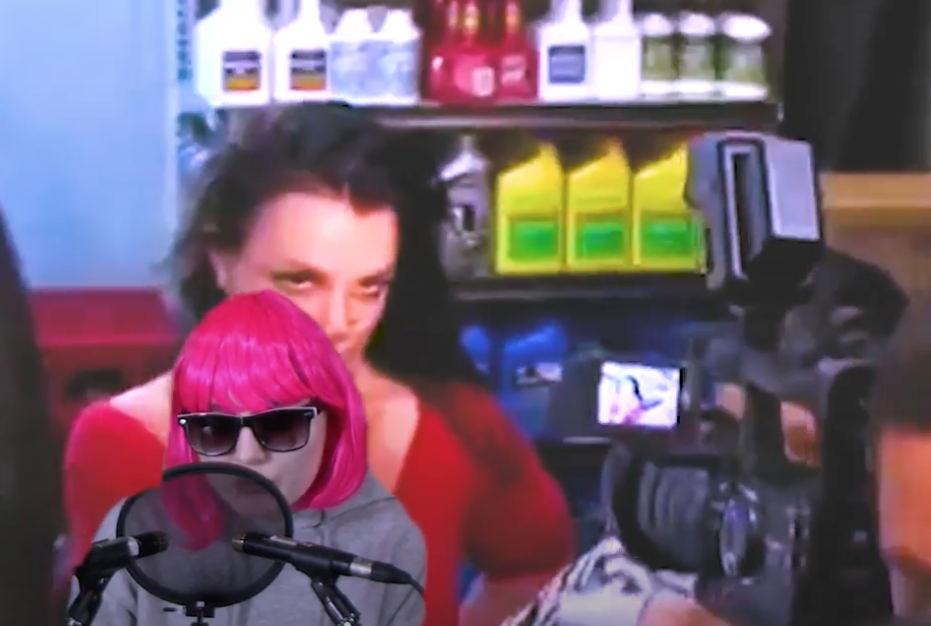
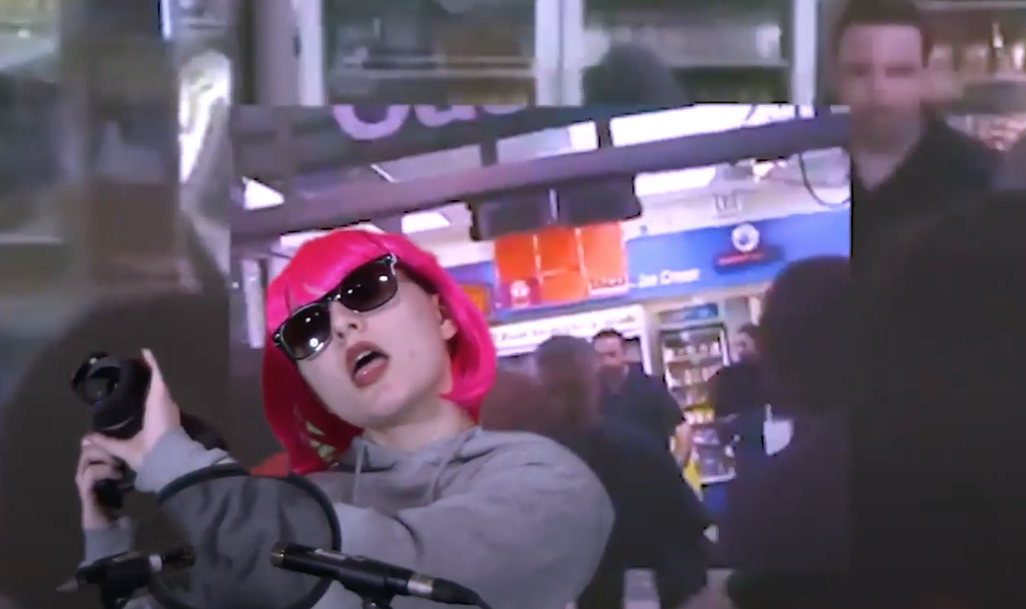
In collaboration with Caroline Araujo
Britney Spears 2007 ASMR is a video laid out in the style of a typical youtube video and imitates an online genre of video known as ASMR videos. ASMR stands for Autonomous Sensory Meridian Response, and involves a physical sensory response as well as an emotional response to certain types of sounds. “Coined in 2010, the name captures a growing appetite for online content that elicits the sensation, in short, of intimacy.” (Orange, 184) These videos usually have millions of views and many people claim that they have a therapeutic affect on listeners. Through mixing this trendy genre of video with an example of a publicized mental break down we draw parallels between the exploitation in both of these instances. As viewers listen to this piece through headphones and watch this bizarre combination of references, the exploitative nature of both the paparazzi following spears in 2007 and the demand for ASMR content becomes clear.
The video includes a series of found footage taken from paparazzi that followed Britney Spears in 2007 during her very public mental breakdown. Scenes of Spears getting a tattoo, shaving her head and being aggressive towards paparazzi are paired with a whispered reenactment of the speech and sounds within the found footage. Araujo is seen in the corner of the screen wearing a pink wig and sunglasses, imitating an iconic look from Britney Spears in 2007 recently after she shaved her head. With two microphones, Araujo creates an ASMR version of this cultural phenomenon, she dramatically acts out scenes from the footage in a sarcastic and humorous way. Throughout the progression of the ASMR reenactment, found footage of Britney Spears crying and pleading with paparazzi to leave her alone is suddenly and intermittently shown. These scenes are used to disrupt the humour of this bizarre ASMR video. This specific moment in 2007 pop culture highlights an obsession with the ‘celebrity’ and a lack of empathy within popular media. As paparazzi chase Spears down, it is clear that they are unconcerned with her obviously deteriorating mental health and are exploiting her to profit off of her misfortune. Araujo is also seemingly unconcerned with Spears’ situation through her apparent willingness to profit off of this content. In this way, people who create and profit from popular online ASMR content are also profiting from the misfortune of others. The similarities don’t end there; in the case of 2007 Britney Spears, her celebrity status proceeded her, and fans around the world felt like they knew her personally. It is clear through analyzing the found footage, that paparazzi felt entitled to film her and insert themselves into her life. In retrospect, the situation with Spears in 2007 is quite tragic and Spears can be seen begging paparazzi to treat her with respect. The false sense of intimacy with Spears is echoed in ASMR videos whose aim is to create a simulated sense of intimacy. It is in this way that people who seek out ASMR content are like Britney Spears desperately trying to appeal to the empathy of the paparazzi.
Ultimately, Britney Spears 2007 ASMR highlights the desperate search for some sort of genuine interaction in a world consumed by media. Caroline and I felt that this comparison speaks to the climate of social media and it’s relation to mental health. The fact that people are seeking out these online alternative to intimacy highlights a deep seeded desire for immediacy and interaction.
Online climate, preformativity, and the ways in which people are searching for alternative theraputic activites is a symptom of a generational rise in anxiety.
Caroline Araujo: ︎ ︎The video includes a series of found footage taken from paparazzi that followed Britney Spears in 2007 during her very public mental breakdown. Scenes of Spears getting a tattoo, shaving her head and being aggressive towards paparazzi are paired with a whispered reenactment of the speech and sounds within the found footage. Araujo is seen in the corner of the screen wearing a pink wig and sunglasses, imitating an iconic look from Britney Spears in 2007 recently after she shaved her head. With two microphones, Araujo creates an ASMR version of this cultural phenomenon, she dramatically acts out scenes from the footage in a sarcastic and humorous way. Throughout the progression of the ASMR reenactment, found footage of Britney Spears crying and pleading with paparazzi to leave her alone is suddenly and intermittently shown. These scenes are used to disrupt the humour of this bizarre ASMR video. This specific moment in 2007 pop culture highlights an obsession with the ‘celebrity’ and a lack of empathy within popular media. As paparazzi chase Spears down, it is clear that they are unconcerned with her obviously deteriorating mental health and are exploiting her to profit off of her misfortune. Araujo is also seemingly unconcerned with Spears’ situation through her apparent willingness to profit off of this content. In this way, people who create and profit from popular online ASMR content are also profiting from the misfortune of others. The similarities don’t end there; in the case of 2007 Britney Spears, her celebrity status proceeded her, and fans around the world felt like they knew her personally. It is clear through analyzing the found footage, that paparazzi felt entitled to film her and insert themselves into her life. In retrospect, the situation with Spears in 2007 is quite tragic and Spears can be seen begging paparazzi to treat her with respect. The false sense of intimacy with Spears is echoed in ASMR videos whose aim is to create a simulated sense of intimacy. It is in this way that people who seek out ASMR content are like Britney Spears desperately trying to appeal to the empathy of the paparazzi.
Ultimately, Britney Spears 2007 ASMR highlights the desperate search for some sort of genuine interaction in a world consumed by media. Caroline and I felt that this comparison speaks to the climate of social media and it’s relation to mental health. The fact that people are seeking out these online alternative to intimacy highlights a deep seeded desire for immediacy and interaction.
Online climate, preformativity, and the ways in which people are searching for alternative theraputic activites is a symptom of a generational rise in anxiety.
